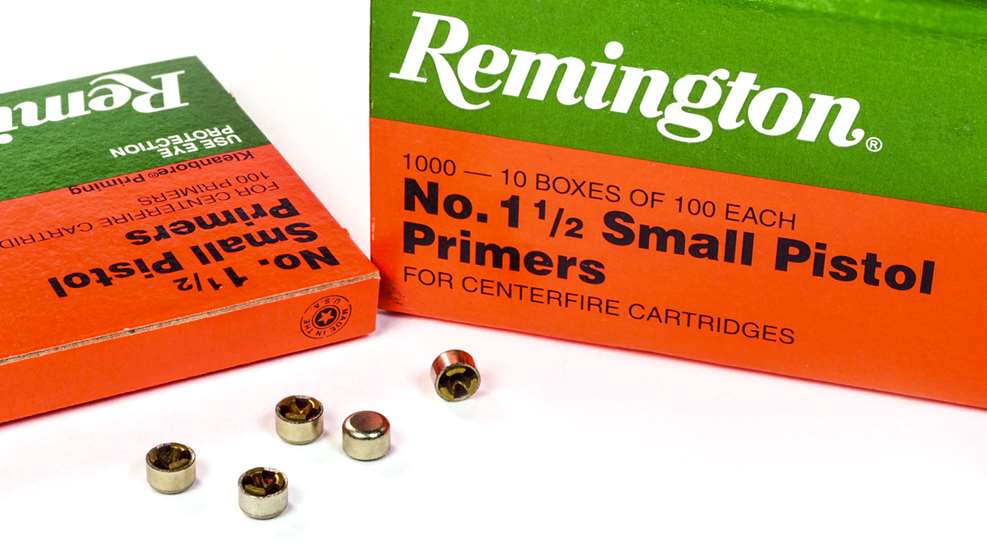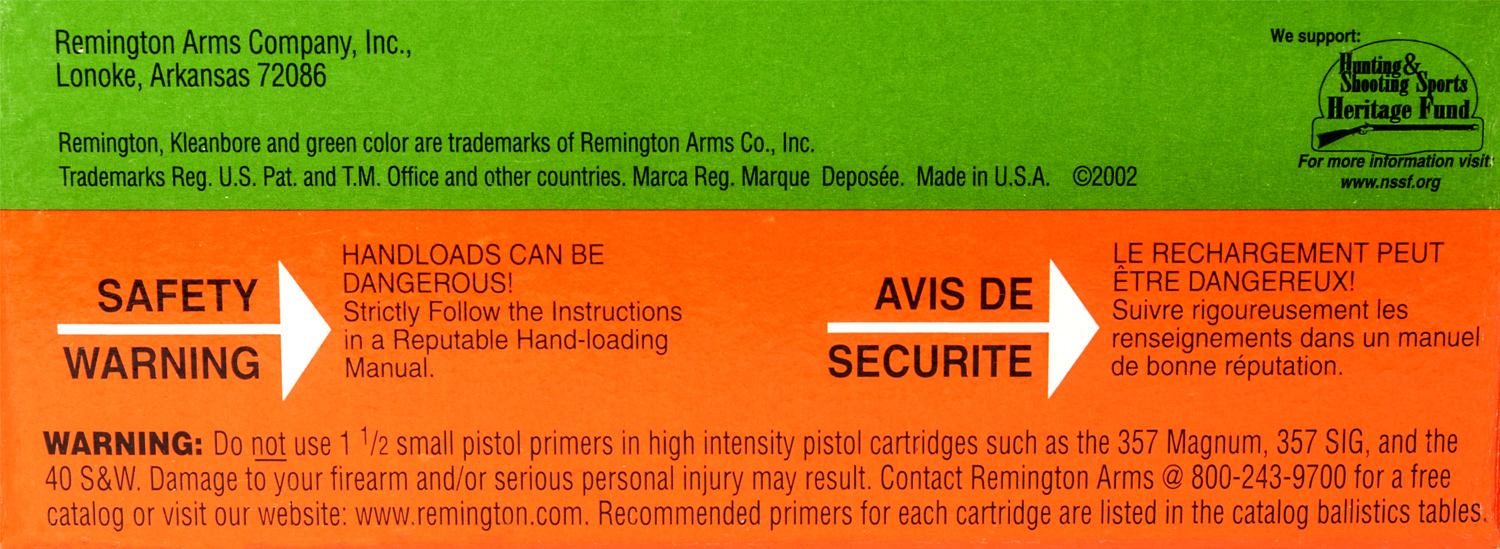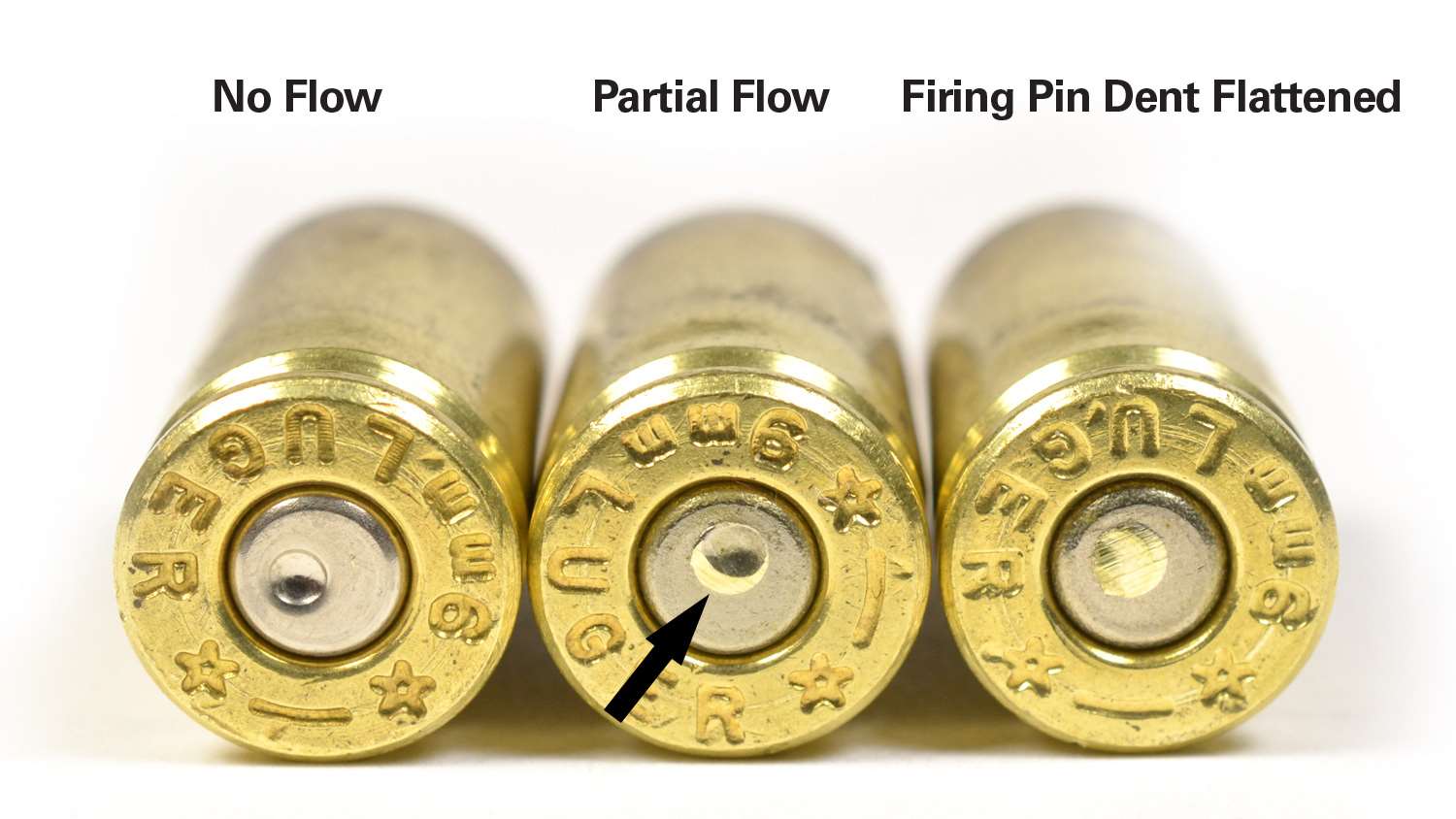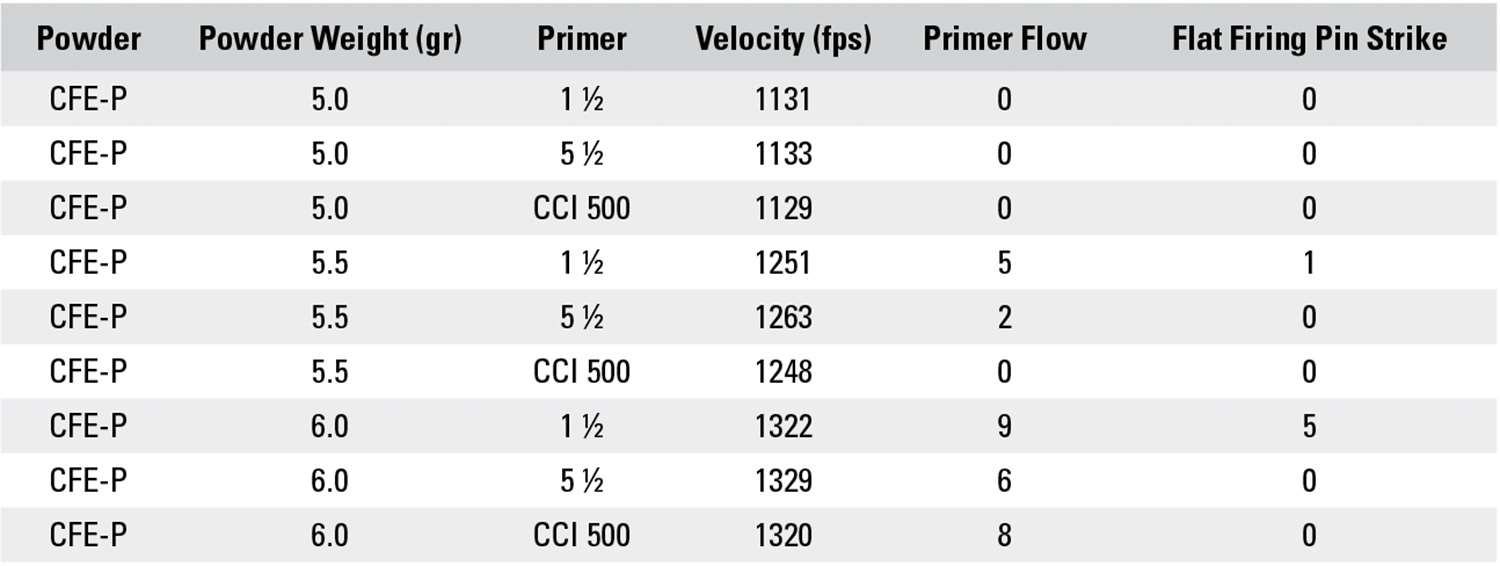
Remington’s 1½ pistol primers are somewhat unique in the world of small pistol primers. They are the only small pistol primer I’m aware of that comes with a warning regarding their use in specific pistol calibers. Most small pistol primers come in two flavors, standard and magnum, their use generally being tailored around what powder one uses. Likewise, most pistol powders are sufficiently ignited with standard primers, while some pistol powders, ball powders like Hodgdon H110 and Winchester 296 for example, benefit from the extra spark of magnum primers to help them burn efficiently. Their use can be easy to remember, standard primers for powders a, b and c, and magnum primers for powders x, y and z.
But Remington’s 1½ and 5½ small pistol primers don’t necessarily fall into the standard versus magnum category that distinguishes between gunpowders. There is a special warning on the 1½ primer box indicating that they are not suitable for certain high pressure cartridges. The warning reads, “Do not use 1½ small pistol primers in high intensity pistol cartridges such as the .357 Magnum, .357 SIG and the .40 S&W. Damage to your firearm and/or personal injury may result.” The warning continues with, “Contact Remington Arms at 800-243-9700 for a free catalog or visit our website: www.remington.com. Recommended primers for each cartridge are listed in the catalog ballistics tables.”
Indeed, Remington’s ballistics tables list the recommended primers for each caliber that Remington loads, handgun and rifle. The 1½ primers are listed for the 25 Auto, .32 S&W, .32 S&W Long, .32 Auto, .380 Auto, .38 S&W, .38 Short Colt and .38 Special. None of these cartridges exceed 25,000 psi peak chamber pressure limits. Surprisingly, the 1½ primer is also listed for the 9mm Luger, the 9mm +P and .38 Super. These latter calibers are not low pressure. The 9mm Luger has a SAAMI (Sporting Arms and Ammunition Manufacturers’ Institute) pressure limit of 35,000 psi, and the +P version’s limit is 38,500 psi. The .38 Super has a SAAMI pressure limit of 36,500 psi. These compare with the .357 Magnum and .40 S&W pressure limit of 35,000 psi, and the .357 SIG’s limit of 40,000 psi. If the 1½ primer is not appropriate for the .357 Magnum and .40 S&W, how can it be appropriate for the 9mm, 9mm +P and .38 Super, which have the same—or even higher pressure limits?
This has caused confusion among some reloaders, myself included. In fact, I was unaware of this warning when I first bought 1½ primers and used them in 9mm Luger loads. I thought the 1½ primers were “standard” primers, and the 5½ primers were “magnum” primers, since that is how they are listed in many primer charts.
I was surprised when some of my 9mm loads with 1½s had pierced primers. My first inclination was to think that I loaded them too hot, perhaps by error. However, the same loads with other brands of primers showed no sign of excess pressure. Why were the Remington primers reacting differently?
At some point, I learned about Remington’s warning. Then it made sense—they aren’t designed to handle high pressure. Since then, I’ve used the 1½ primer in 9mm Luger with mixed results. With some 9mm loads, the primers had no evidence of primer flow. In other loads, the 1½ primers had primer flow when other primer brands did not. In extreme cases, the 1½ primers were pierced.
Remington’s recommended use of the 1½ primer implies a difference in cup thickness or cup strength such that the 1½ won’t handle the same amount of pressure as the 5½, or other brands of small pistol primers that don’t have warnings about using them in particular cartridges.
What happens if you use 1½ primers in loads that you shouldn’t? Excessive flow of primer metal can result in some of it being sheared off and ending up in your firing pin hole. This can block the firing pin, resulting in misfires.
Pierced primers can instantly plug the firing pin hole and can also result in firing pin and breech face erosion from hot, high pressure gas. Gas erosion is bad news for your gun. An eroded firing pin tip will itself cause pierced primers, because of its uneven shape.
There is also the potential that you, the shooter, are at risk of getting a blast of hot gas and primer metal in the face. Obviously this could have serious consequences, including eye damage. Always wear safety glasses when shooting anything!

Loads were assembled in 9mm Luger ammunition to demonstrate how 1½ primers respond to pressure. Winchester 124-grain FMJ bullets were loaded to 1.130-inch overall length with three different charge weights (5.0, 5.5 and 6.0 grains) of Hodgdon CFE Pistol in Starline brass. Three primers were used, Remington 1½, 5½ and CCI 500.
The low charge weight of CFE Pistol, 5.0 grains, is a mid-range load. The 5.5-grain load is near the maximum standard pressure or a +P load, depending on which manual one consults. The high charge weight, 6.0 grains, is a +P+ load and is safe ONLY in pistols specially designed to handle this type of pressure. It was included to test primer reaction to very high pressure. Do NOT use this load in your 9mm pistol. Always follow load data from a loading manual.
All three primers produced similar velocities for a given charge weight. The 5½ primer produced a little more speed (12+ fps) than the other primers with the 5.5-grain load, but not so much with the other loads.

At the low charge weight, none of the primers had evidence of primer flow. At the middle charge weight, five of the ten 1½ primers had primer flow. One of these was severe primer flow, where the firing pin dent had been completely flattened out. The 5½ primers had minor flow in two primers. None of the CCI 500 primers had primer flow.
At the highest charge weight, all the primer brands experienced primer flow. But only the 1½ primers had extreme flow resulting in the firing pin dent being completely flattened out, though some of the other primers were close to that. No primers were pierced.
The Remington 1½ primers are especially sensitive to pressure. They are more subject to primer flow, and produce more serious primer flow when pressure gets higher than the other primers tested. However, they showed no evidence of primer flow at the lowest charge weight, which is a moderate pressure load.
Since primer flow can be a problem, they aren’t the best choice for high pressure loads. If in doubt, try them with your load to see how they react.
I limit use of the 1½ primers in 9mm to low pressure loads, to reduce the chance of primer flow and primer material plugging the firing pin hole. I’ve also used 1½ primers with good results in small primer .45 Auto cases. The .45 Auto pressure limit is 21,000 psi, which certainly qualifies as low pressure.
Keep Remington’s recommendation for 1½ primers in mind the next time you’re shopping for primers. The 1½ primers work great in low to moderate pressure pistol rounds, but if you are loading to high pressure, a different primer might be a better choice.
As a final note, Remington’s 6½ small rifle primers also come with a warning about their use in rifle cartridges. They say, “Do not use 6½ small rifle primers in high intensity rifle cartridges such as the .17 Rem., .222 Rem., and the .223 Rem.” Remington’s catalog shows the 6½ listed only in the .22 Hornet (49,000 psi) and .30 Carbine (40,000 psi) calibers. All other small rifle primer calibers use the 7½ primers.
The Remington catalog can be found at: remington-catalog.com/catalogs/remington/2017. A downloadable PDF version can be found here: remington-catalog.com/catalogs/remington/2017/pdf/2017-Remington-Catalog.pdf

































